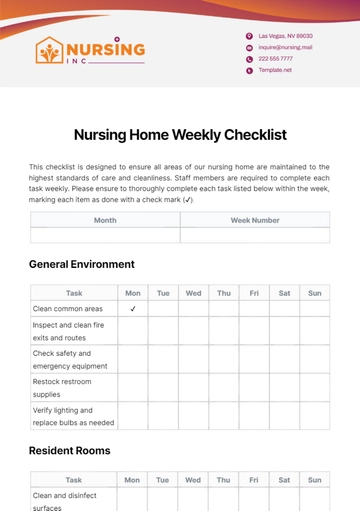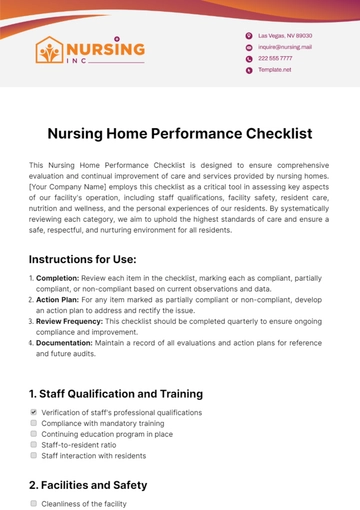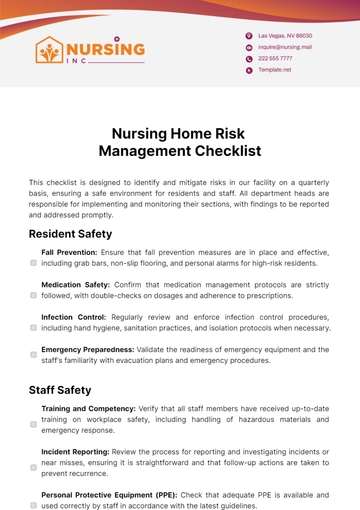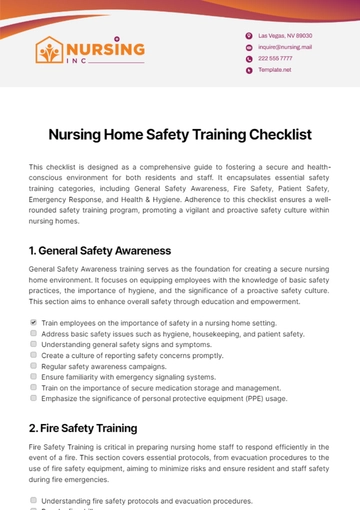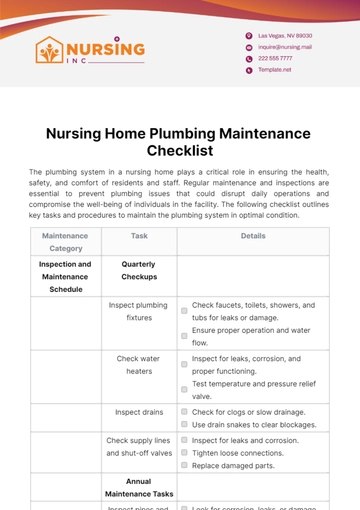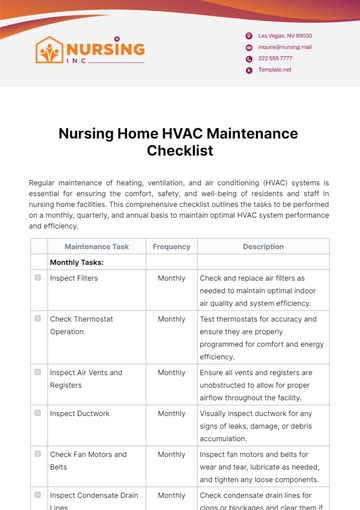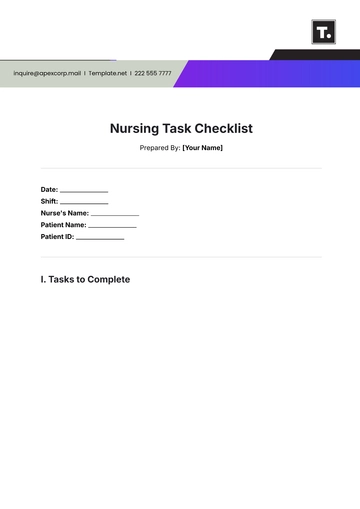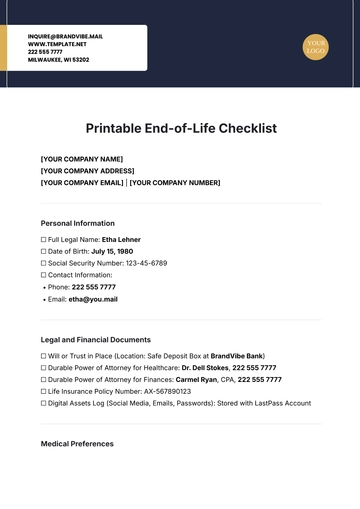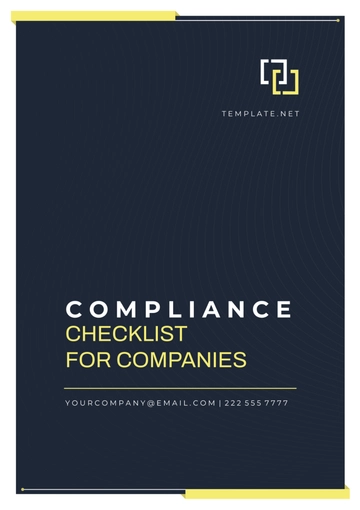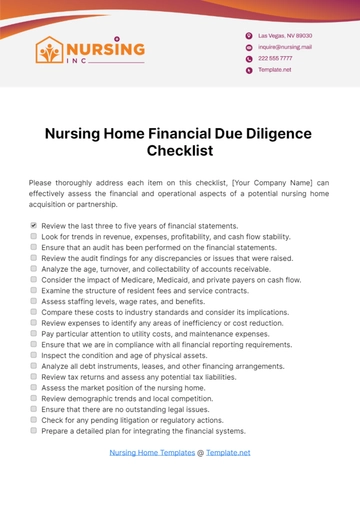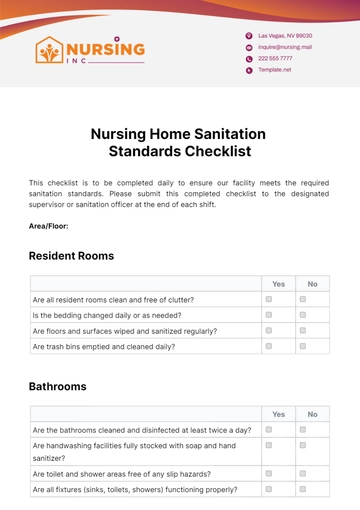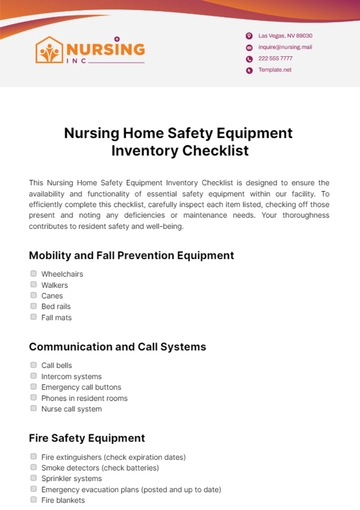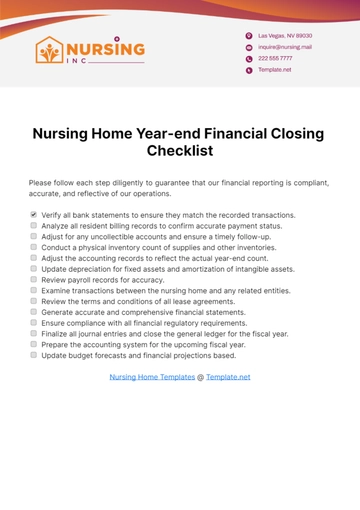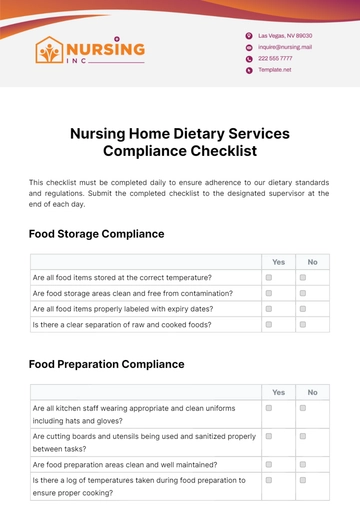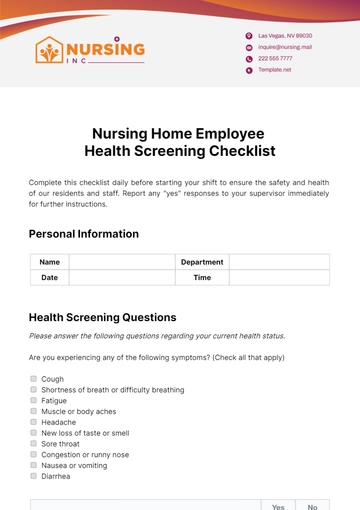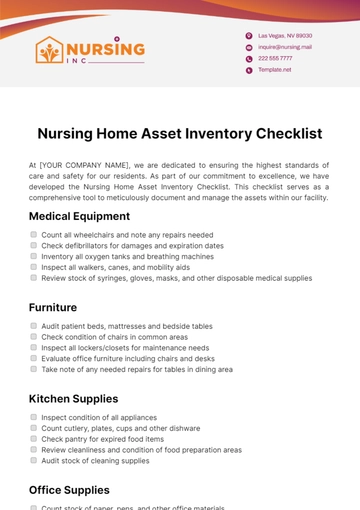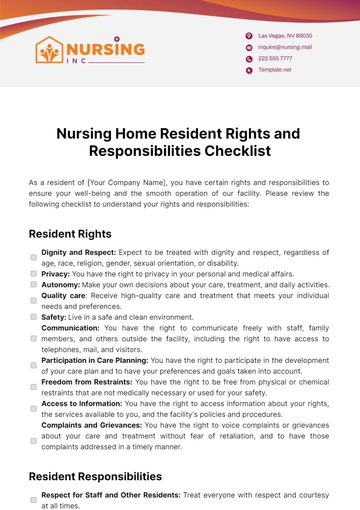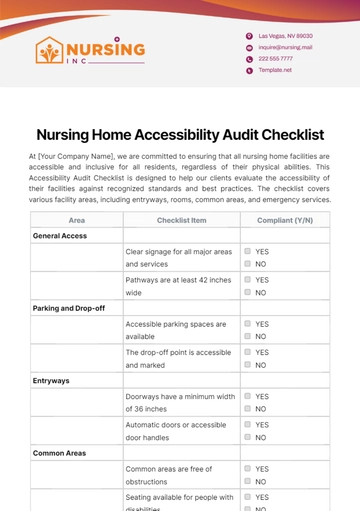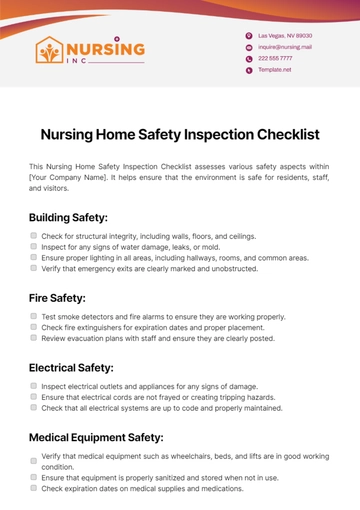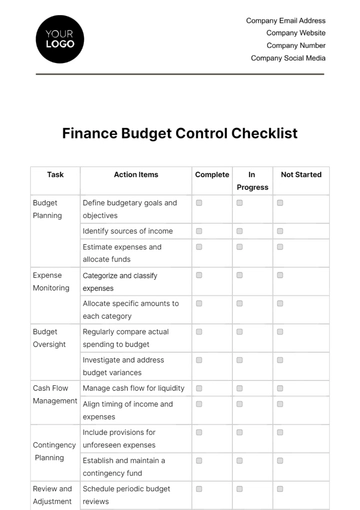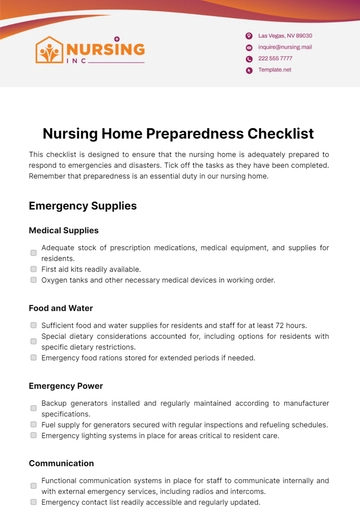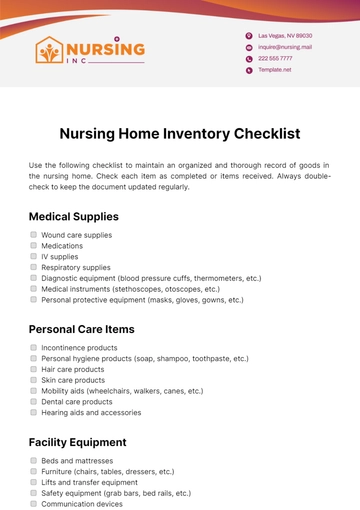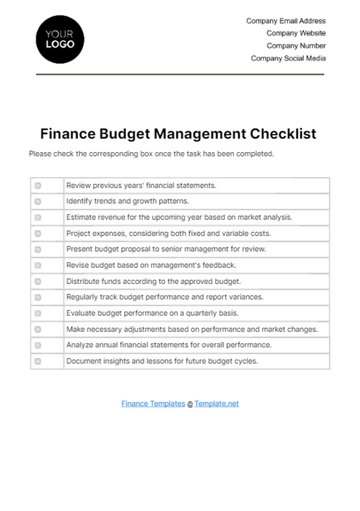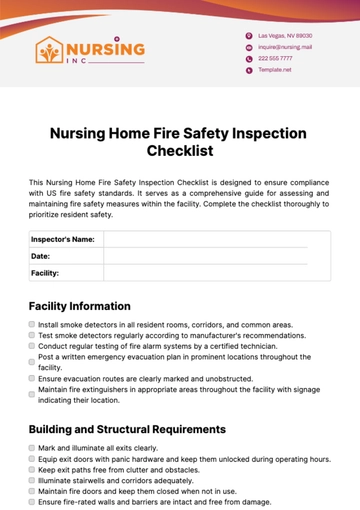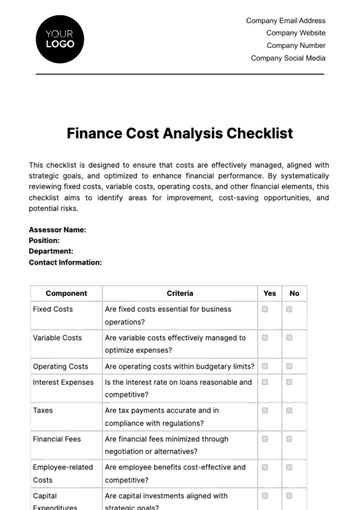Free Brand Reputation Advertising Management Checklist
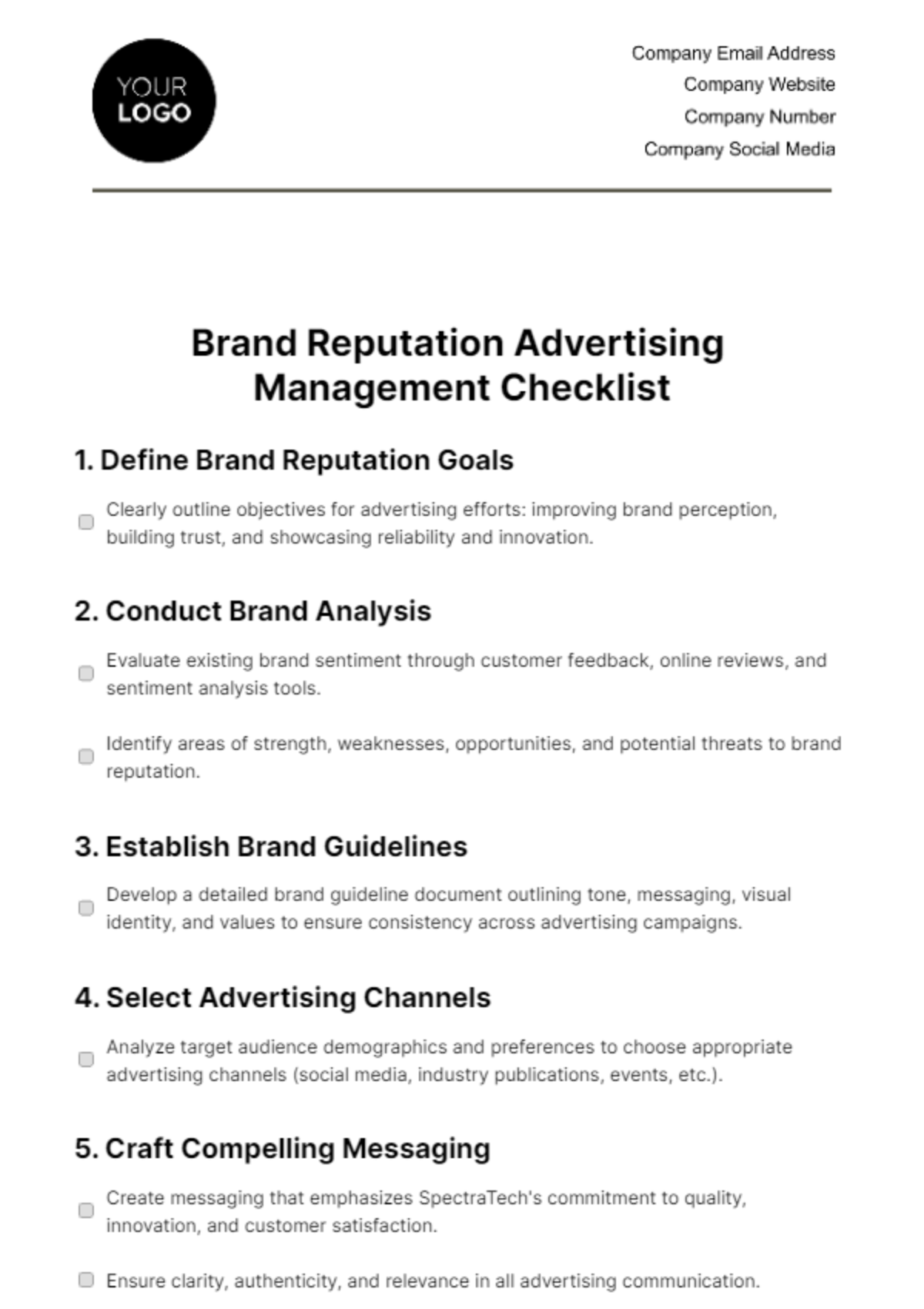
1. Define Brand Reputation Goals
Clearly outline objectives for advertising efforts: improving brand perception, building trust, and showcasing reliability and innovation.
2. Conduct Brand Analysis
Evaluate existing brand sentiment through customer feedback, online reviews, and sentiment analysis tools.
Identify areas of strength, weaknesses, opportunities, and potential threats to brand reputation.
3. Establish Brand Guidelines
Develop a detailed brand guideline document outlining tone, messaging, visual identity, and values to ensure consistency across advertising campaigns.
4. Select Advertising Channels
Analyze target audience demographics and preferences to choose appropriate advertising channels (social media, industry publications, events, etc.).
5. Craft Compelling Messaging
Create messaging that emphasizes SpectraTech's commitment to quality, innovation, and customer satisfaction.
Ensure clarity, authenticity, and relevance in all advertising communication.
6. Monitor Ad Content and Placement
Regularly review advertising content to ensure alignment with brand guidelines and values.
Monitor ad placements to avoid association with controversial or inappropriate content or platforms.
7. Incorporate Customer Feedback
Establish mechanisms to collect and analyze customer feedback related to advertising campaigns, using insights to fine-tune strategies and messaging.
8. Crisis Management Plan
Develop a robust crisis management plan detailing steps to address potential issues or negative feedback promptly and effectively.
Identify a crisis management team and communication protocol for swift response to any brand reputation threats.
9. Monitor and Respond to Social Media
Maintain an active presence on social media platforms, monitoring brand mentions, engaging with customers, and addressing concerns or feedback promptly.
Implement strategies to encourage positive user-generated content and community engagement.
10. Measure and Analyze Results
Define KPIs for brand reputation (customer sentiment, brand recall, etc.) and regularly track campaign performance against these metrics.
Utilize analytics to evaluate the impact of advertising efforts on brand perception and adjust strategies accordingly.
11. Continuous Improvement
Conduct periodic reviews and refinement of the advertising strategy based on insights gained from analytics, customer feedback, and market trends.
12. Compliance and Ethical Considerations
Ensure all advertising practices comply with industry regulations, ethical standards, and consumer protection laws to maintain brand integrity.
13. Training and Team Collaboration
Provide training to the marketing team to ensure understanding and adherence to brand guidelines, fostering a unified approach across all campaigns.
14. Review and Update Checklist
Regularly revisit and update the checklist to integrate new best practices and adapt to changing market dynamics, ensuring the checklist remains relevant.
- 100% Customizable, free editor
- Access 1 Million+ Templates, photo’s & graphics
- Download or share as a template
- Click and replace photos, graphics, text, backgrounds
- Resize, crop, AI write & more
- Access advanced editor
Discover Template.net's Brand Reputation Advertising Management Checklist Template, a comprehensive tool for maintaining brand integrity. Easily customize and edit checklists with our AI Editor Tool to align with your advertising strategies. Enhance brand reputation and consistency with this editable and customizable solution, ensuring effective advertising management.
You may also like
- Cleaning Checklist
- Daily Checklist
- Travel Checklist
- Self Care Checklist
- Risk Assessment Checklist
- Onboarding Checklist
- Quality Checklist
- Compliance Checklist
- Audit Checklist
- Registry Checklist
- HR Checklist
- Restaurant Checklist
- Checklist Layout
- Creative Checklist
- Sales Checklist
- Construction Checklist
- Task Checklist
- Professional Checklist
- Hotel Checklist
- Employee Checklist
- Moving Checklist
- Marketing Checklist
- Accounting Checklist
- Camping Checklist
- Packing Checklist
- Real Estate Checklist
- Cleaning Checklist Service
- New Employee Checklist
- Food Checklist
- Home Inspection Checklist
- Advertising Checklist
- Event Checklist
- SEO Checklist
- Assessment Checklist
- Inspection Checklist
- Baby Registry Checklist
- Induction Checklist
- Employee Training Checklist
- Medical Checklist
- Safety Checklist
- Site Checklist
- Job Checklist
- Service Checklist
- Nanny Checklist
- Building Checklist
- Work Checklist
- Office Checklist
- Training Checklist
- Website Checklist
- IT and Software Checklist
- Performance Checklist
- Project Checklist
- Startup Checklist
- Education Checklist
- Home Checklist
- School Checklist
- Maintenance Checklist
- Planning Checklist
- Manager Checklist
- Wedding Checklist
- Vehicle Checklist
- Travel Agency Checklist
- Vehicle Inspection Checklist
- Interior Design Checklist
- Backpacking Checklist
- Business Checklist
- Legal Checklist
- Nursing Home Checklist
- Weekly Checklist
- Recruitment Checklist
- Salon Checklist
- Baby Checklist
- Equipment Checklist
- Trade Show Checklist
- Party Checklist
- Hospital Bag Checklist
- Evaluation Checklist
- Agency Checklist
- First Apartment Checklist
- Hiring Checklist
- Opening Checklist
- Small Business Checklist
- Rental Checklist
- College Dorm Checklist
- New Puppy Checklist
- University Checklist
- Building Maintenance Checklist
- Work From Home Checklist
- Student Checklist
- Application Checklist

